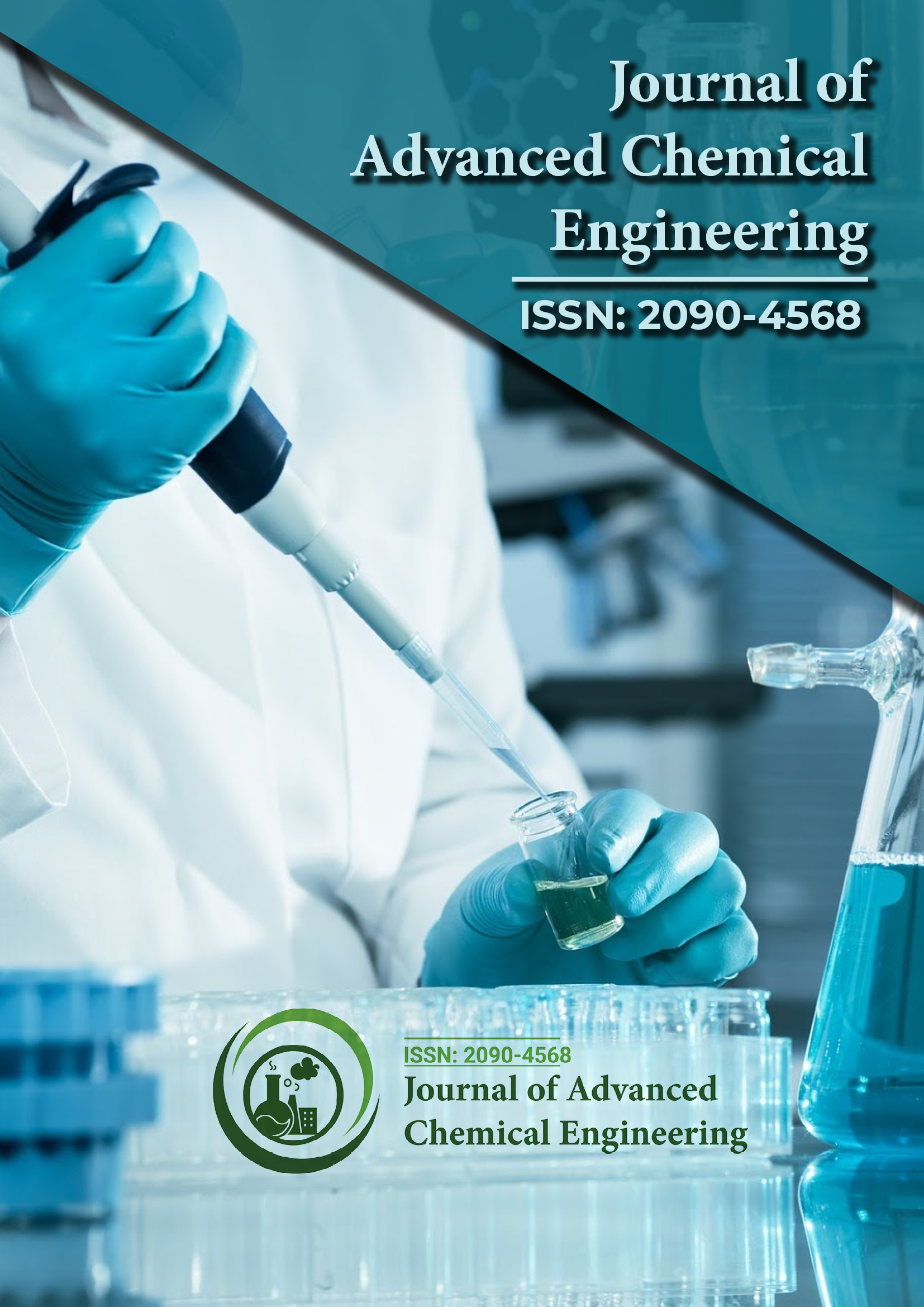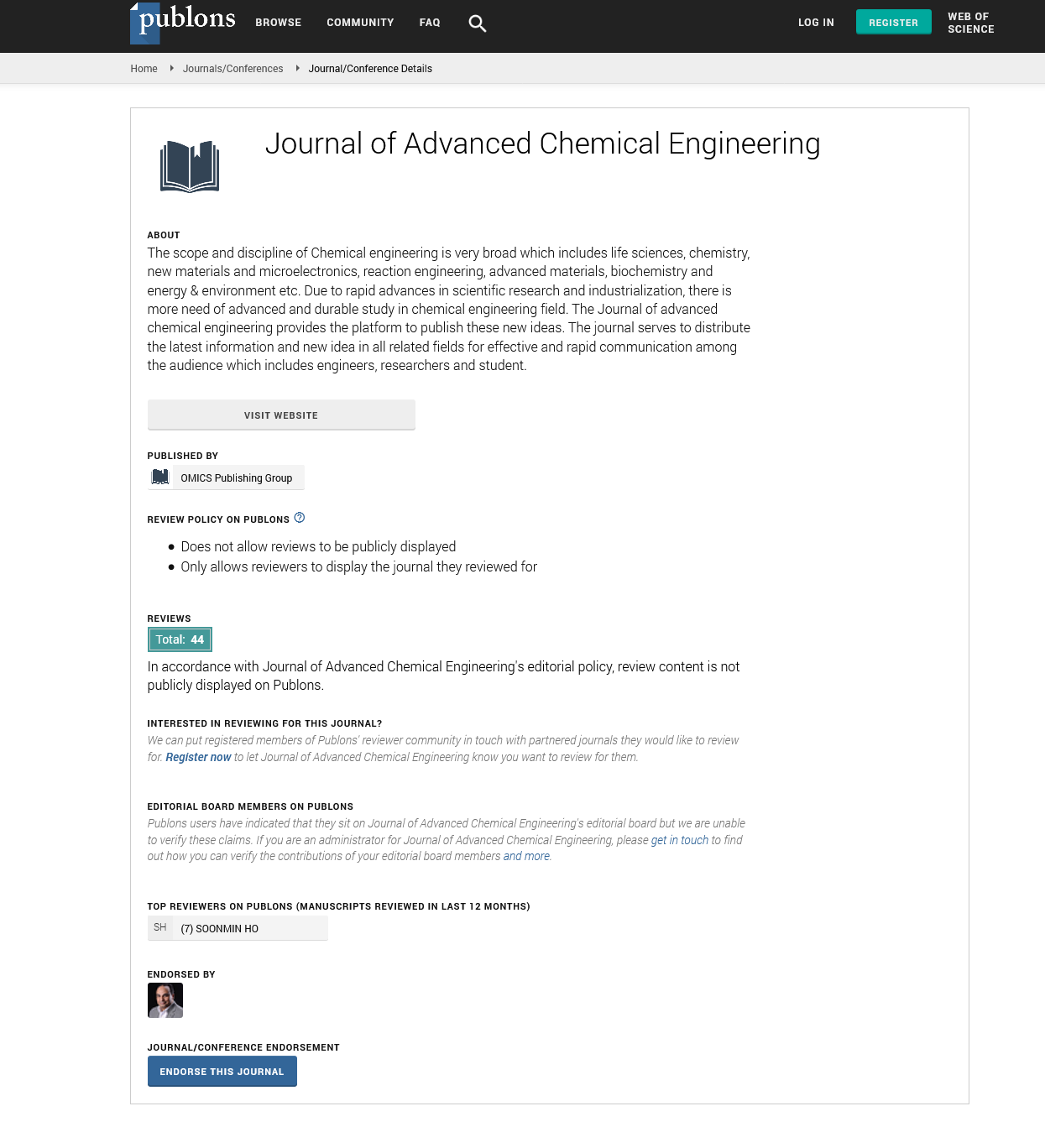Indexed In
- Open J Gate
- Genamics JournalSeek
- Smithers Rapra
- RefSeek
- Directory of Research Journal Indexing (DRJI)
- Hamdard University
- EBSCO A-Z
- OCLC- WorldCat
- Scholarsteer
- Publons
- Geneva Foundation for Medical Education and Research
- Google Scholar
Useful Links
Share This Page
Journal Flyer

Open Access Journals
- Agri and Aquaculture
- Biochemistry
- Bioinformatics & Systems Biology
- Business & Management
- Chemistry
- Clinical Sciences
- Engineering
- Food & Nutrition
- General Science
- Genetics & Molecular Biology
- Immunology & Microbiology
- Medical Sciences
- Neuroscience & Psychology
- Nursing & Health Care
- Pharmaceutical Sciences
Perspective - (2024) Volume 14, Issue 3
Role of Ni-Fe Oxygen Carriers in CLHP: Key Factors for Optimization
Nicholas Papadopoulos*Received: 30-Aug-2024, Manuscript No. ACE-24-28336; Editor assigned: 02-Sep-2024, Pre QC No. ACE-24-28336 (PQ); Reviewed: 16-Sep-2024, QC No. ACE-24-28336; Revised: 23-Sep-2024, Manuscript No. ACE-24-28336 (R); Published: 30-Sep-2024, DOI: 10.35248/2090-4568.24.14.345
Description
Chemical Looping Hydrogen Production (CLHP) has gained significant attention as an efficient, cost-effective and sustainable method for hydrogen production. One of the critical elements of CLHP is the oxygen carrier material, which serves to transfer oxygen between the reduction and oxidation stages of the process. Among the various candidates for oxygen carriers, Nickel-Iron (Ni-Fe) based materials have demonstrated promising performance due to their excellent reactivity, low cost and ability to effectively participate in the cyclic reactions required for chemical looping processes. Understanding the reaction kinetics of these Ni-Fe oxygen carriers is important for optimizing their performance and facilitating the development of more efficient chemical looping systems.
The reaction kinetics of Ni-Fe oxygen carriers in CLHP processes are primarily controlled by the redox reactions between the oxygen carrier and the fuel, such as hydrogen or hydrocarbons. In the reduction step, the oxygen carrier reacts with the fuel to release oxygen, producing water and carbon dioxide (if hydrocarbons are used). In the oxidation step, the oxygen carrier is regenerated by reacting with air, restoring its oxidized state for the next cycle. The efficiency of these reactions depends on several factors, including the oxygen carrier's composition, surface area, porosity and the reaction environment, such as temperature and gas composition.
Ni-Fe oxygen carriers typically exhibit a two-step reaction mechanism, with the first step involving the reduction of the metal oxide to its metallic form (Ni or Fe) and the second step involving the re-oxidation of the metal to its oxidized state (NiO or Fe2O3). The overall reaction is highly exothermic, releasing energy during both the reduction and oxidation stages. The kinetics of these reactions are influenced by the oxygen carrier's ability to efficiently transfer oxygen, which is determined by factors such as the metal oxide's intrinsic reactivity, particle size and the oxygen diffusion rate.
In terms of reduction kinetics, Ni-Fe oxygen carriers have shown faster reduction rates compared to other conventional materials, such as Cu-based carriers, due to the high reactivity of both nickel and iron with hydrogen and hydrocarbons. Nickel, in particular, has a high affinity for hydrogen and can rapidly form Ni-H bonds, facilitating the transfer of oxygen to the fuel. However, the reduction kinetics is also influenced by the presence of iron, which enhances the overall reactivity of the carrier and promotes faster oxygen release. The reaction kinetics can be further optimized by tailoring the ratio of Ni to Fe, as well as by controlling the particle size and surface area of the oxygen carrier. Smaller particles with higher surface area typically exhibit faster reaction rates, as they provide more active sites for the reduction and oxidation reactions.
During the oxidation step, the kinetics of Ni-Fe oxygen carriers is influenced by the availability of oxygen and the temperature of the system. The oxygen carriers must undergo a two-step oxidation process, first forming an intermediate oxide phase and then fully oxidizing to their final state. The presence of iron in the oxygen carrier enhances the oxidation kinetics, as iron readily forms a stable oxide (Fe2O3), which facilitates the transfer of oxygen to the carrier. The oxidation kinetics of Ni-Fe oxygen carriers is typically slower than their reduction kinetics, as the re-oxidation process involves a slower oxygen diffusion rate. However, the addition of iron to the carrier can help to speed up the oxidation process by increasing the overall oxygen transfer capacity.
In conclusion, the reaction kinetics of Ni-Fe oxygen carriers play an important role in the performance of chemical looping hydrogen production systems. By understanding the factors that influence the reduction and oxidation reactions, researchers can optimize the design and operation of these systems to achieve higher efficiency and stability. The development of new materials advanced processing techniques and improved understanding of the reaction mechanisms will continue to drive progress in the field of chemical looping hydrogen production. With ongoing advancements, Ni-Fe oxygen carriers hold great potential for enabling the large-scale, cost-effective production of hydrogen, a key component of a sustainable and low-carbon energy future.
Citation: Papadopoulos N (2024). Role of Ni-Fe Oxygen Carriers in CLHP: Key Factors for Optimization. Adv Chem Eng. 14:345.
Copyright: © 2024 Papadopoulos N. This is an open access article distributed under the terms of the Creative Commons Attribution License, which permits unrestricted use, distribution and, reproduction in any medium, provided the original author and source are credited.

